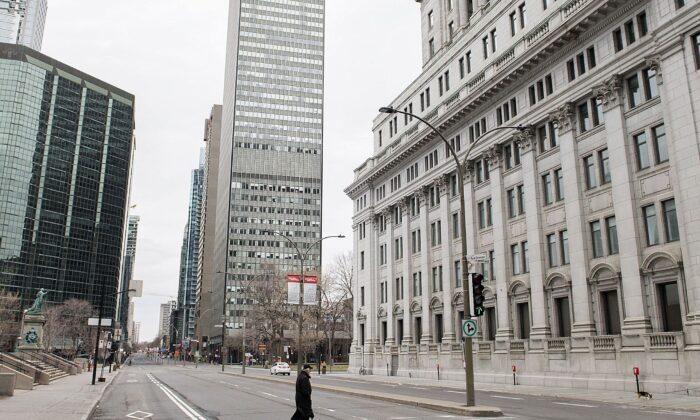Canada is habitually described as a federation (or sometimes “confederation”). Legally, of course, it is one. But has Canada been a functional federation—and is it one today?
Some history is required. In 1867, under the perceived threat of American ambitions directed at British North America, the de facto federation of Canada East (Quebec) and Canada West (Ontario) was expanded to the Maritimes and transformed into a self-governing Dominion. The result found legal expression in the British North America Act (later renamed the Constitution Act (1867).
A year later, Great Britain’s Imperial Parliament passed the Rupert’s Land Act specifying that the Hudson’s Bay Company would surrender its rights and privileges over the enormous lands stretching north and west from the much-smaller-than-today Ontario and Quebec, under terms and conditions to be negotiated by Hudson’s Bay, Britain’s Colonial Office, and Canada. The new Dominion obtained these lands via an Imperial Order-in-Council: Territorial expansion was a gift from the Imperial Crown.
This inspired Canada’s incipient empire-builders in their nascent capital, Ottawa, to extend their new political entity from its historical “Laurentian” core out to the Pacific Ocean, incorporating British Columbia in 1871, and tying all of that together with the Canadian Pacific Railway.
Many inhabitants of the enormous “missing link” in between did not welcome the Canadians. They had not been consulted about any of this, which helped spark the political resistance by the Red River Settlement in 1870 and the much more serious and violent North West Rebellion 15 years later. At that point, the territory was occupied by a paramilitary frontier regiment—the North-West Mounted Police (later the RCMP).
The various numbered treaties with indigenous peoples followed and, in turn, agricultural settlement and its subordination to the commercial interests of Laurentian Canada by means of Prime Minister John A. Macdonald’s grotesquely named “National Policy.” It imposed heavy tariffs on imported manufactured goods, greatly inflating prices for critically needed farm implements and thereby needlessly complicating and slowing the Prairies’ economic development while enriching Laurentian Canada.
In 1905, the two new provinces of Alberta and Saskatchewan were created and in 1912 an expanded Manitoba joined them. James Mallory, a distinguished political scientist at McGill University, referred to these three as “provinces in the Roman sense.” Huh? An ancient Roman provincia was an outlying locale where administrative rule was exercised by Rome or its agent and, unlike the inhabitants of Italy, was required to pay tribute to the capital.
That should make Mallory’s analogy clear. Ottawa had created three second-class Prairie provinces—with little representation in Parliament, without control over their lands and natural resources as other provinces had, and subject to economic policies virtually guaranteed to perpetuate their poverty.
In 1930, the Prairie West’s subordinate legal status vis-à-vis Laurentian Canada was lifted—but the Great Depression immediately followed, and then the Second World War, and thus more years of poverty and political obscurity. With the great oil discovery at Leduc, Alberta, in 1947, Canada’s economic fate changed dramatically, but it took a generation or so for the national implications to penetrate Laurentian consciousness. Meanwhile the rapid secularization of Quebec—its so-called Quiet Revolution—threw up a new problem, soon expressed as separatism.
The 1982 Constitution Act was Laurentian Canada’s response. It created a new legal configuration of the country including a “distinct society” with special status that was also a political unit, Quebec. When matters again got out of hand in the mid-1990s and many Canadians thought Quebec was seriously seeking independence, Parliament passed the Clarity Act demanding that any provincial referendum on separation deliver a “clear majority on a clear question” before any break-up negotiations could begin.
The 1982 Constitution Act and the 2000 Clarity Act thus constitute the legal response of Canada’s national establishment to underlying societal changes that in turn drove the politics of Quebec—and much of Canada. The latter act, in particular, attempts to impose federal supremacy over top of the provinces.
Everyone agrees that social, economic, and political realities change. Formerly wealthy jurisdictions grow poor, formerly poor jurisdictions become big and prosperous, and religious societies become secular. Such changes are reflected in a nation’s politics and, in the case of constitutional states, eventually in changes to their constitution. Legal fundamentalists who say Canada’s Constitution is set in stone are wrong. One of the strategic purposes of Alberta’s Sovereignty Act, passed in late 2022, is precisely to drive changes to Canada’s Constitution.
One of the Sovereignty Act’s central provisions enables Alberta to refuse to enforce federal laws that are unconstitutional, that intrude on constitutionally specified areas of provincial jurisdiction or that plain do not serve Alberta’s interests. This is what Premier Danielle Smith meant when she said on third reading of Bill 1 that, “It’s not like Ottawa is a national government.” What she meant was that Ottawa, like each province, is a constituent of a federation. Provinces are not subordinate to the federal government; each constitutionally recognized and protected level is co-determinate with the other.
The political distance dividing Alberta’s Sovereignty Act from Ottawa’s Clarity Act is huge. The one contemplates a restoration of federalism, the other an end to it. If Alberta is to remain strong and free—Fortis et Liber, as indicated on its coat of arms—Laurentians will have to change their attitude and change their political culture. That is the condition—and the challenge—for making Canada a genuine functional federation.




